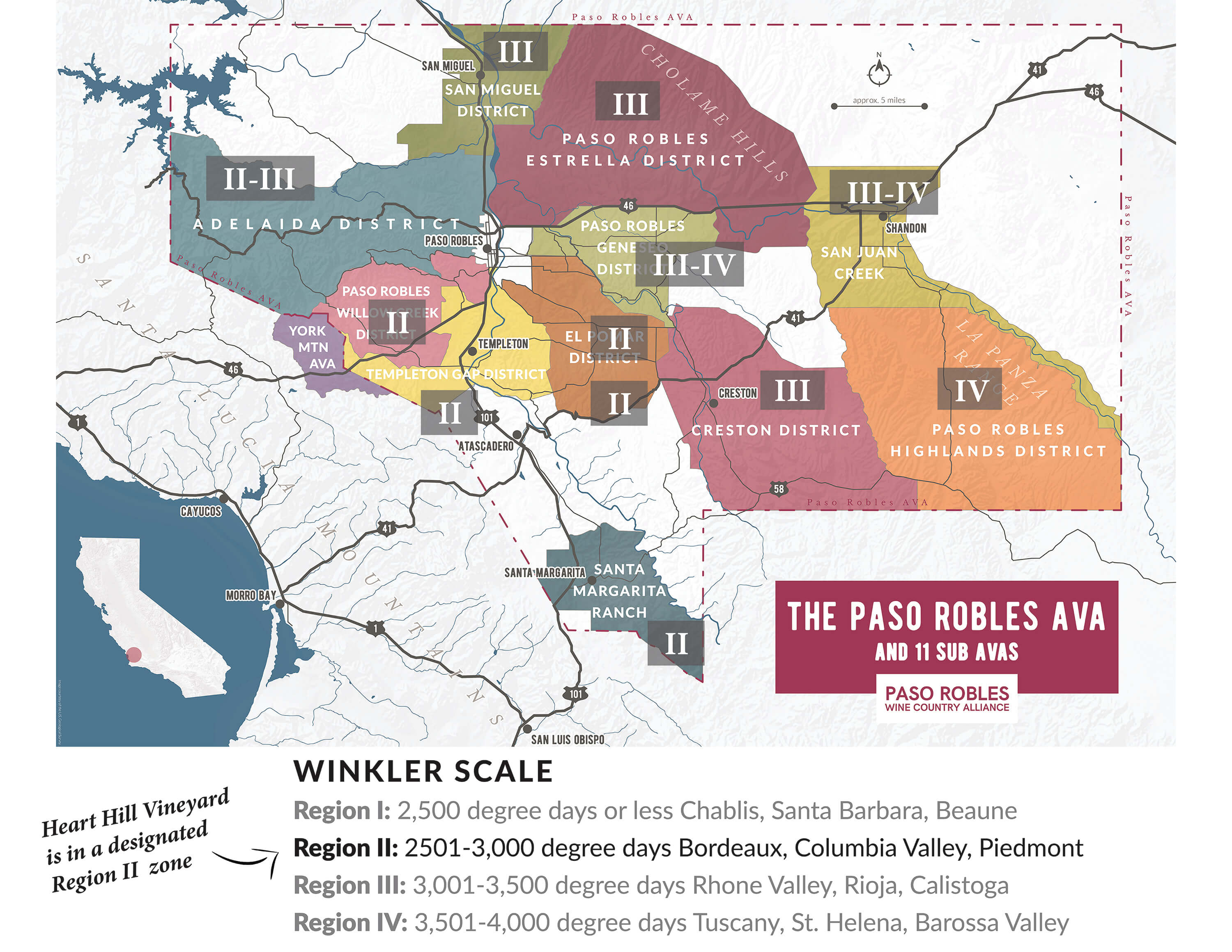Heart Hill Vineyard
2020 marks our 13th year of farming at Heart Hill Vineyard. Today we're sharing why this site is so special, and what the future holds.
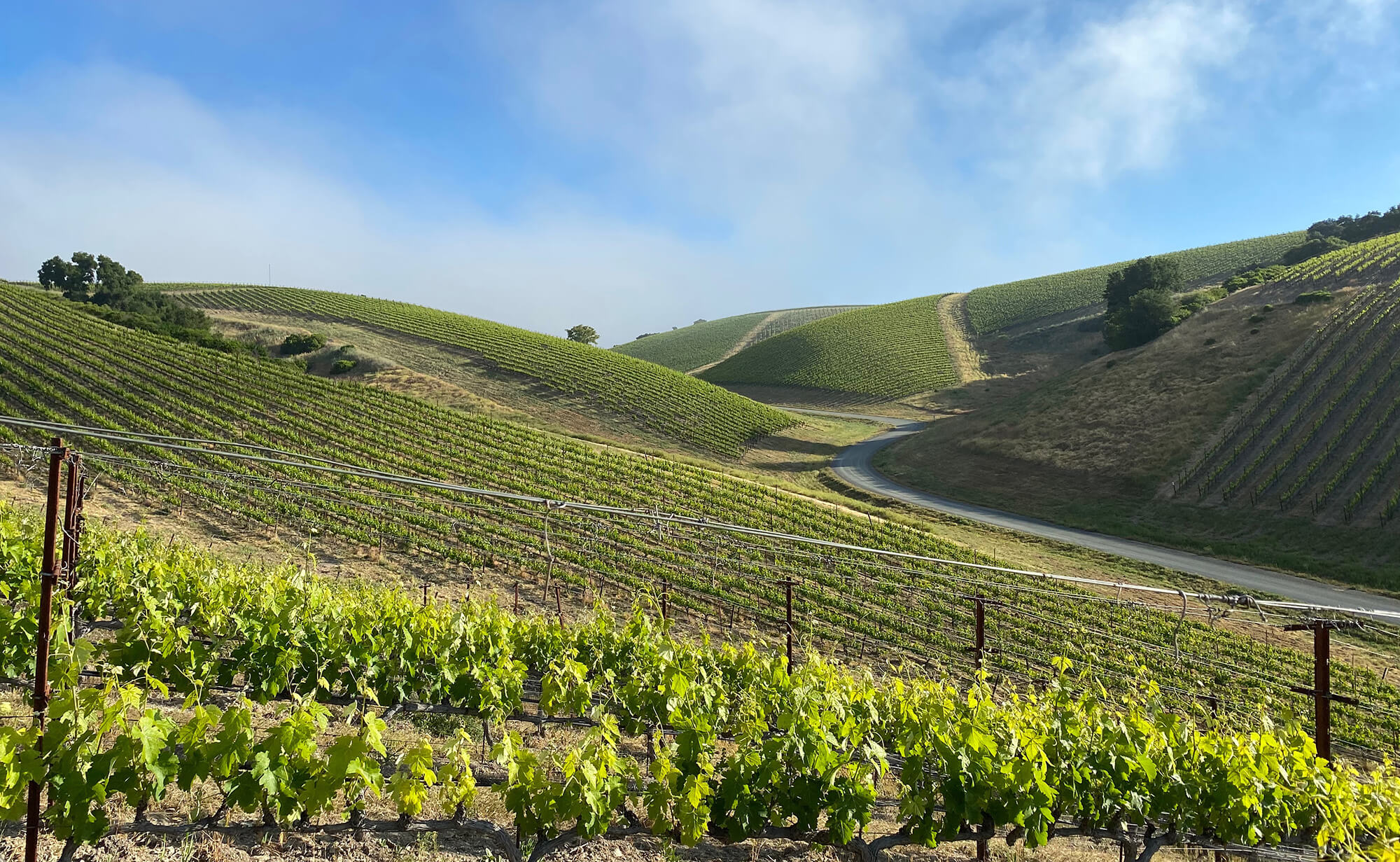
Cabernet Sauvignon, Petit Verdot, syrah and grenache vines on the rockly hillsides
We purchased the Heart Hill property in 2003 and planted the first vines in 2007. At the time, several of our neighbors were producing incredible, highly acclaimed Syrah based wines. With that knowledge we planted some Rhone varieties (Syrah, Grenache, Mourvedre and some whites). We also included a few parcels of Bordeaux vines, which weren’t widely planted around us at the time.
If you’ve been to the tasting room, you can still see those original Cabernet Sauvignon, Malbec and Petit Verdot vines framing the iconic Heart (to see a vineyard map, click here). Over the years this hillside consistently produced the best wines from the property and became the foundation of Fog Catcher. We have since grafted a few blocks over to new Cabernet Sauvignon clones and are expanding our vineyard with new Bordeaux vines.
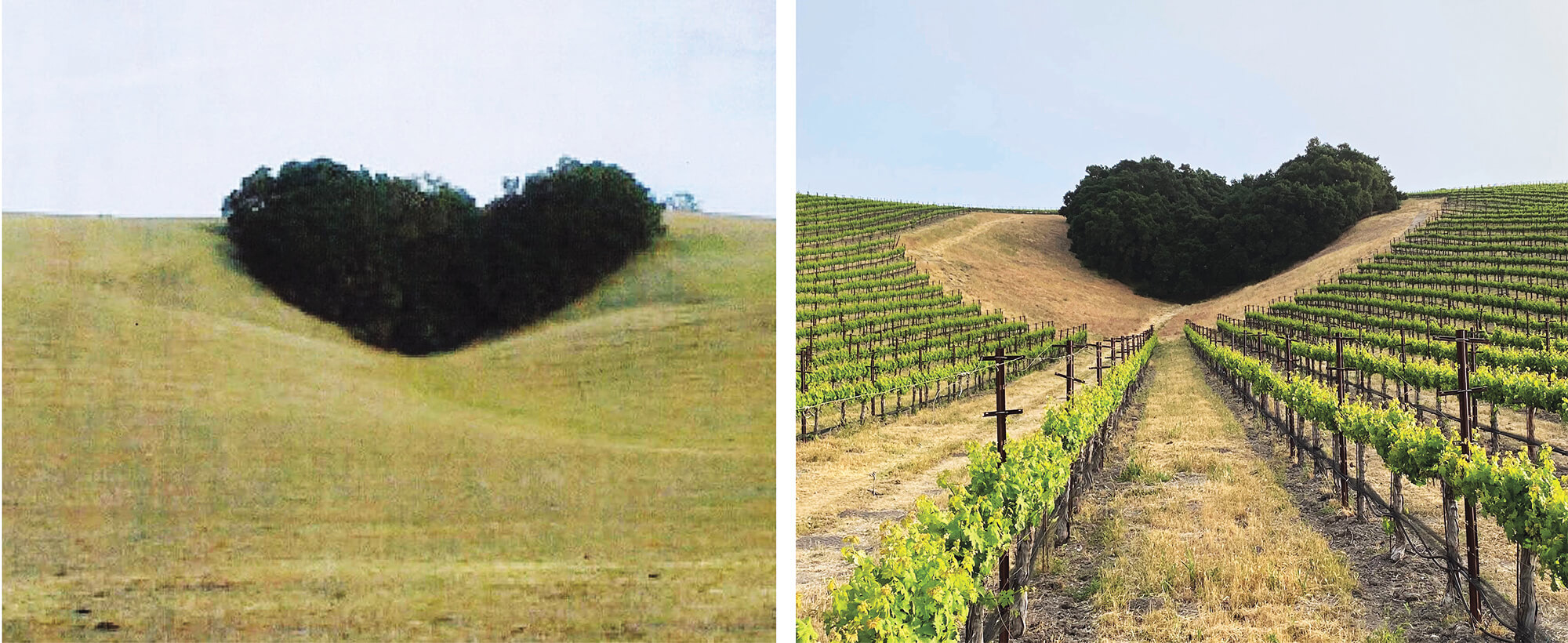
Heart Hill in 2003 vs. 2020
Humility and time are the two things that it takes to figure out how to farm quality grapes and make great wines. The last thirteen years of evolving at Heart Hill and have reiterated two things:
1. We are in pocket of Paso Robles naturally suited to high quality viticulture
2. We have an incredibly diverse site and with experience that can lead to really interesting wines
Paso Robles, Willow Creek District
Heart Hill Vineyard sits 17 miles east of the Pacific Ocean in the Willow Creek District of the Paso Robles AVA. Willow Creek is defined by two key attributes: steep rolling hillsides and ocean proximity.
The temperature is on the cooler side for Paso Robles - we are a II on the Winkler Scale which measures temperatures across different growing regions. Below is a comparision of all 11 Paso Robles sub-AVAs, including ours. Coastal breezes sail through the Templeton Gap in the Santa Lucia Mountain Range that stands between us and the coast and tempers the Paso Robles heat. You can see the temperatures get warmer the farther inland you go.
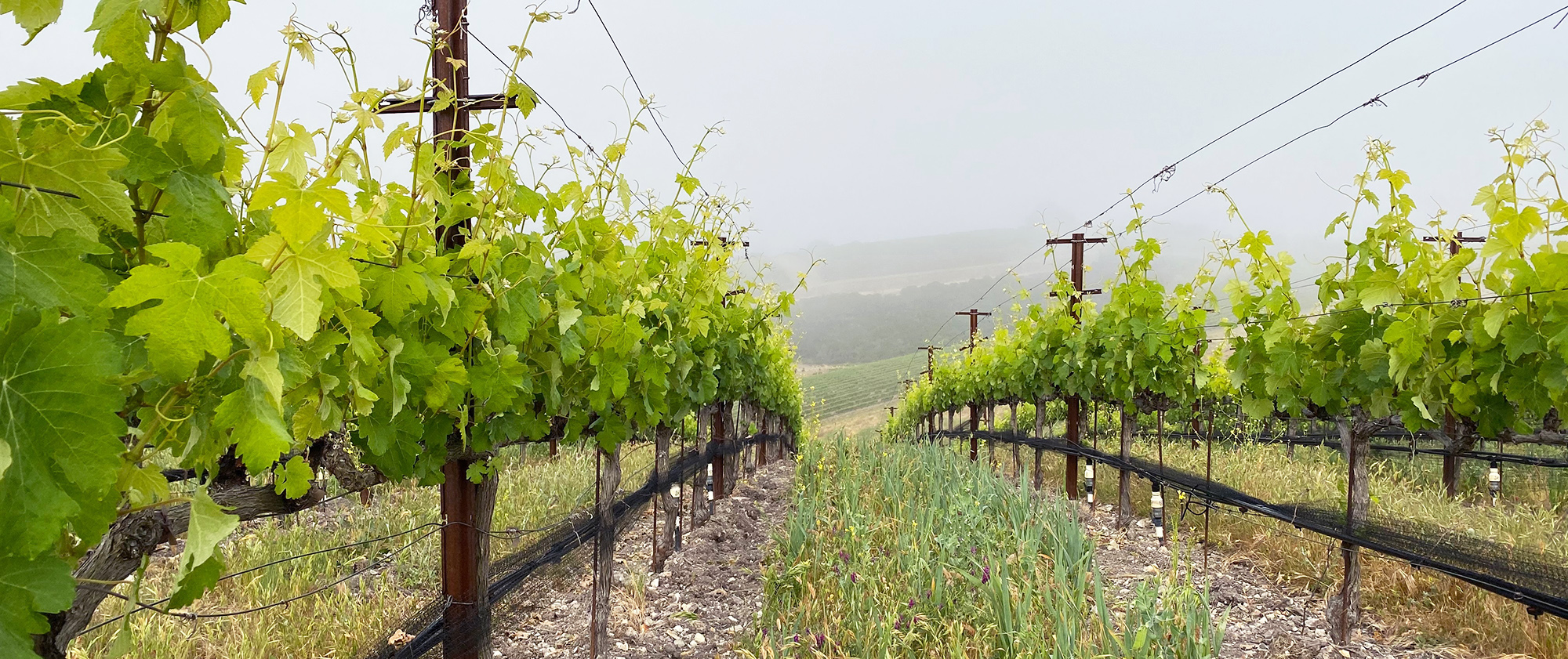
cool, foggy mornings and strong afternoon breezes are common at our site
The soil
The hillsides in the Willow Creek District are remnants of an ancient seabed that fractured and raised as two tectonic plates collided. In fact, as we’ve developed the vineyard we've found ancient seashells deep inside the hillsides on several occasions. Across the site, we’re farming in a combination of loam and fractured shale - photos below.
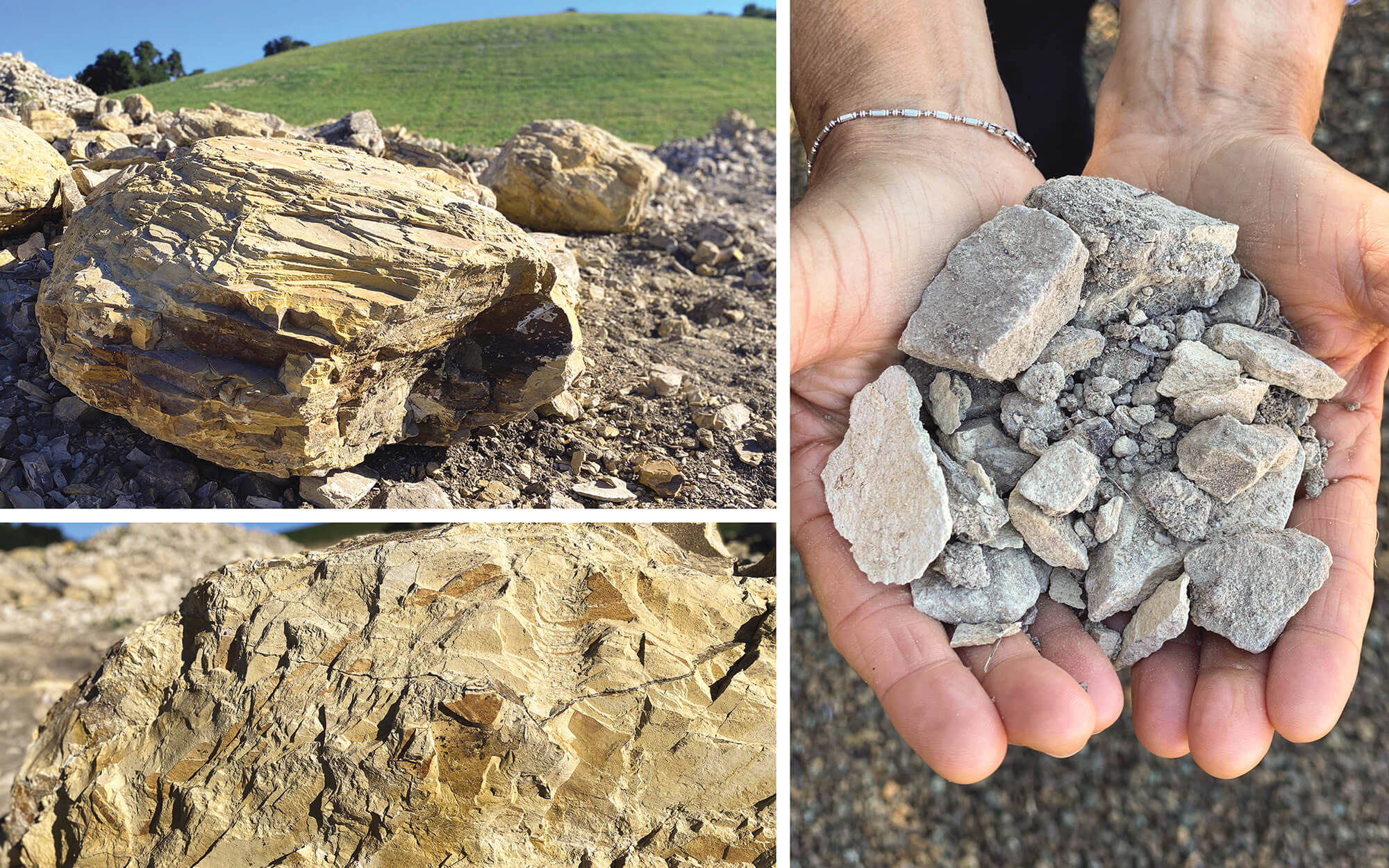
large and small pieces of shale make up a large portion of our soil composition
Part of the beauty of this site is that it varies in chemical composition by the hillside. For you soil nerds: most of our slopes are silica based (Siliceous Shale) with a few rich in chalk or (Calcareous Shale). The first 24” of the soil roughly 50% shale, and upwards of 90% shale as you go deeper.
This soil type and profile is ideal for high quality viticulture. We have enough soil to farm healthy vines but enough shale to keep them naturally devigorated. Healthy, controlled vine growth is the key to great wines: we can produce a small amount of grapes and get each cluster to full ripeness.
Our Experience at Heart Hill
Vineyard Timeline
Year 1 - you plant
Year 3 - first grapes
Year 5 - first taste of Year 3 finished wine
Estate winemaking is a long-term game fraught with uncertainty. When you plant a vine you generally have to spend 8-10 years (minimum) farming it before you can make good wine from it. It can take up to 5 years until you even get your first taste of a finished wine from the vineyard. The timeline can be shortened, however we favor upwards of 28 months of oak barrel aging for Fog Catcher.
In our own experience we started to see a few of our the original 2007 plantings of Cabernet, Malbec and Petit Verdot blocks emerge from the pack, so to speak, in the 2015-2016 vintages. Over the last few years we’ve put a lot of thought into the future of this vineyard. We have planted a new set of diverse Cabernet Sauvignon clones alongside Malbec, Petit Verdot, and Carménère. Internally, our team calls it the “Fog Catcher Vineyard” because we believe that it will become the new frontier for our best Paso Robles wines.
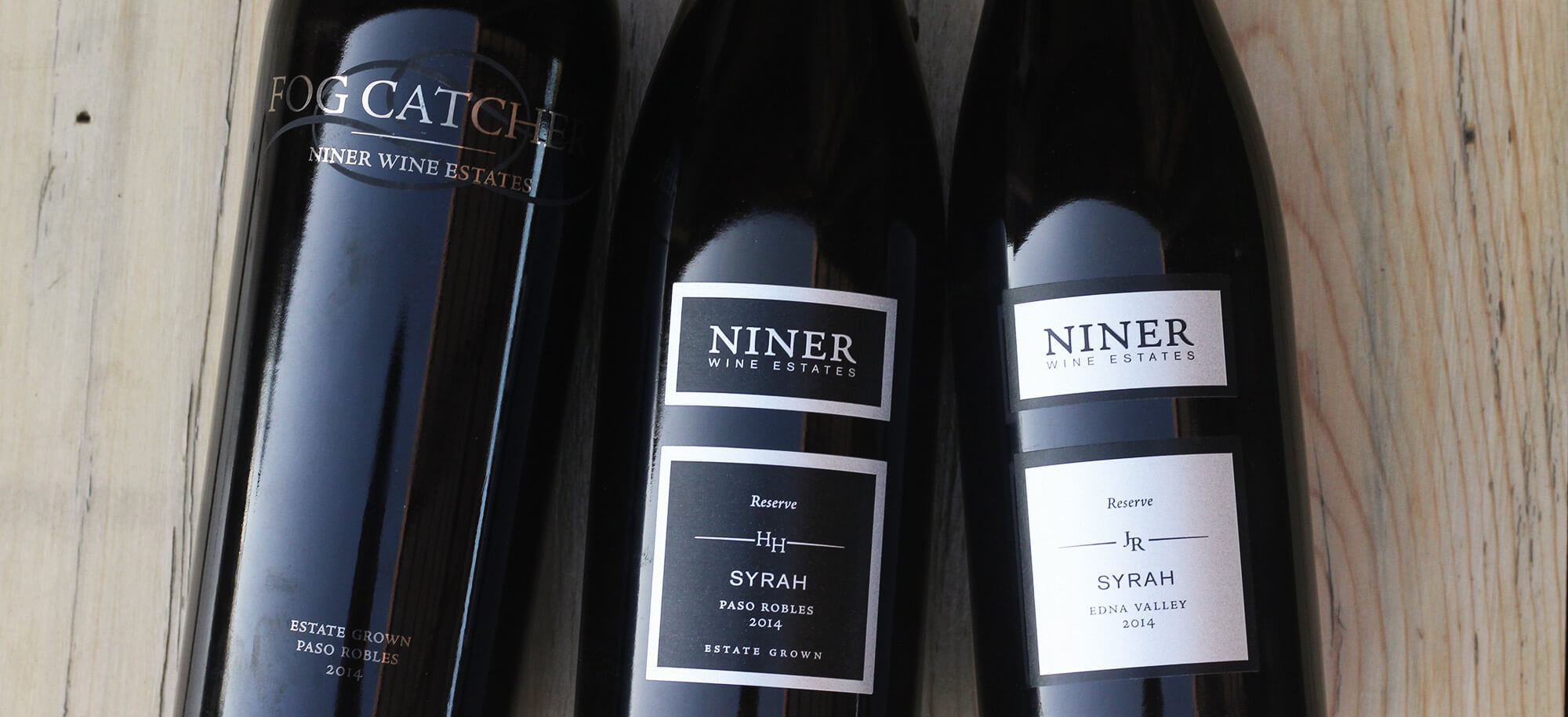
three wines to drink now
2016 Fog Catcher
As we mentioned, the foundation of this wine comes from the front hillsides of Heart Hill Vineyard. Our original Cabernet Sauvignon (Block 3), Malbec (Block 4) and Petit Verdot (Block 5) develop deep flavors and tannins while maintaining acidity (thank you afternoon ocean breezes). If you're looking for a single wine that captures all the power, finesse and elegance of this site, the 2016 Fog Catcher is it // 874 cases produced; 45% Cabernet Sauvignon, 26% Malbec, 15% Carménère, 14% Petit Verdot; $100, shop here »
2017 Reserve Cabernet Sauvignon, Heart Hill Vineyard
Some years, we bottle a small amount of single-vineyard Cabernet Sauvignon in addition to Fog Catcher. This bottle also comes primarily from Block 3 Cabernet Sauvignon. 2017 is drinking beautifully right now, however the palate is outlined with bright acidity and coarse tannins that will soften over time, making this a great aging canditate. // 423 cases produced; 85% Cabernet Sauvignon, 15% Petit Verdot; $75 shop here »
2017 Reserve Square Root, Heart Hill VIneyard
Just because we’re excited about Bordeaux doesn’t mean we’re getting out of the Rhone game. Syrah has a powerful presence at the site, with Block 22 specifically producing an inky, concentrated and tannin-rich wine each year. Winemaker Patrick Muran based this Reserve GSM on framing that Syrah, with smaller amounts of Grenache and Mourvedre from the site to adding freshness and earthiness. // 336 cases produced; 62% Syrah, 20% Grenache, 18% Mourvedre; $55 shop here »
